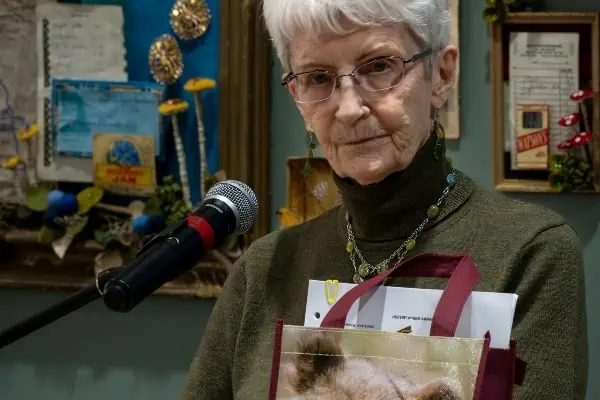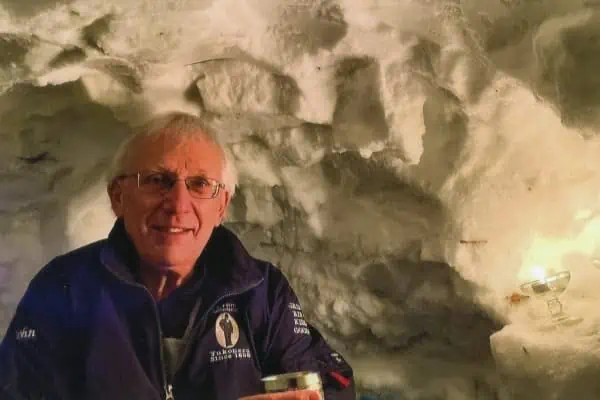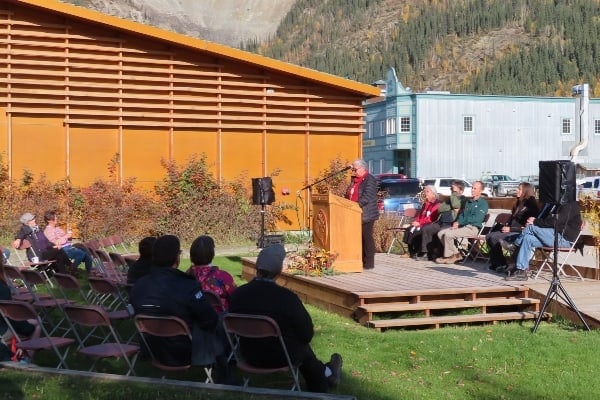With the exception of sports figures, Max Fraser contends, Canadian heroes seldom get the respect they deserve.
The Whitehorse filmmaker and military history buff wants to help change that, especially when it comes to a larger-than-life former Yukoner, Joseph Whiteside Boyle.
“I’m still trying to figure out this character, Joe Boyle, because I’ve never met, or been close to, anybody like him,” Fraser said.
“I think his story is a big, fat story that should be cherished and championed by every Canadian, and certainly every Yukoner.”
Boyle was born in Toronto just four months after Confederation in 1867. At the age of 30, he arrived in the Klondike gold fields along with an Australian prizefighter named Frank Slavin.
“They would go to the mining camps to provide entertainment. Frank would do the boxing, and Joe would take the bets and handle the money,” Fraser explained.
But with his eye on higher stakes, Boyle soon headed back south to raise money for his scheme to replace hand shovels and sluice boxes in placer mining with more productive, landscape-chewing mechanical dredges.
The gamble paid off, making Boyle one of the richest men in the Klondike.
“When he got those gold concessions to all that land in the Klondike gold fields, he literally moved mountains and rivers,” Fraser said.
“There’s not many people on the planet these days who think and act that big. And if they do, people usually try to stop them.”
Always an adventurer and sports enthusiast, in 1905 Boyle organized and paid for a Dawson City hockey team that travelled to Ottawa to compete – unsuccessfully – for the Stanley Cup.
When war erupted in Europe in 1914, Boyle immediately offered to finance a 50-man machine gun detachment of Yukon volunteers for the Canadian war effort, although he himself was too old to enlist.
“I think the Canadian Armed Forces would have had a hard time figuring out what to do with Joe Boyle. And Joe Boyle would not have had the patience for military life and organization,” Fraser said.
“He was a leader of men. He had to command, and the role he ultimately found in World War I suited him and his personality to a ‘T’. He could write his own ticket, so to speak.”
In 1916, Boyle left the Yukon for England, to be closer to the wartime action.
“He never returned to Canada, and he never returned to the Yukon. He never went back to see his parents after the war ended – or his wife, which was a source of scandal at the time. I don’t know if it was scandal with a capital ‘S’, or a small ‘s’.”
From then until his death in 1923, Boyle’s life unspooled in a remarkable series of chapters, which are at least partially documented in various written accounts.
He accepted an assignment with the American Committee of Engineers to fix the hopelessly-snarled Russian railway system, receiving several medals from the Czarist administration for his efforts.
Even after the Bolshevik Revolution in 1917, he was asked to stay on, and did so until Russia withdrew from World War I. Somewhere along the line, he became a British spymaster, running a network of almost 500 agents to keep an eye on both Germany and Bolshevik Russia.
Perhaps the most colourful chapter concerned his service to the Balkan nation of Romania – and its beloved Queen Marie, a granddaughter of both Queen Victoria of England and Emperor Alexander II of Russia.
As he had done for Russia, Boyle untangled Romania’s railway system, and helped repatriate Romanian treasures that had fallen into Russian hands.
He also played a key role on the country’s behalf at the Paris Peace Conference in 1919, persuading the Canadian government to grant Romania $25 million in aid.
“My goodness, $25 million in 1919? That he could persuade Canada to give one small European country that much aid speaks volumes about his ability to persuade a government in a post war period,” Fraser said.
“I mean, in postwar Canada, everything was cut back. The Yukon Territory basically went into receivership. There was hardly any government, and hardly any economy – although Joe Boyle’s mining legacy eventually became Yukon Consolidated Gold Corporation, which operated until the 1960s.”
For his efforts on behalf of the Balkan kingdom, Boyle was able to add the official honorific of “Saviour of Romania” to the accolades he had received from Britain, France and Russia.
Whether or not Boyle and Marie were actually lovers remains unclear, although he was clearly a close confidant and trusted friend.
Another mystery that has intrigued historians concerns the identity of the black-clad woman who placed flowers on Boyle’s grave in Middlesex, England, every November 6 – his birthday – each year until 1938, the year Queen Marie died.
In 1983, Boyle’s remains were reinterred with full military honours in his hometown of Woodstock, Ontario.
This year, the Yukon Historical & Museums Association, together with the Whitehorse Branch of the Royal Canadian Legion, will mark Boyle’s birthday with a free public celebration at the Mount McIntyre Recreation Centre, from 12 p.m. to 3 p.m. on Saturday, November 4.
The family-centred event will include music, dancing, singing and cake, as well as special displays honouring both Boyle and the 95 Yukoners who lost their lives during World War I.
The displays will include a life-sized cardboard cutout of Boyle for those who want their picture taken with the one-time Klondike King who is considered a hero in Romania.
Fraser is both a Legion member and one of the event’s organizers.
“I’m glad we were able to put it together, because this is a special occasion. We’ve got Canada’s 150th, but here’s the 150th birthday of this incredible Canadian,” he said.
“And, while he may not be celebrated in other parts of the country – with the possible exception of Woodstock – we’re going to celebrate him here, and do what we can to champion his contributions.”




